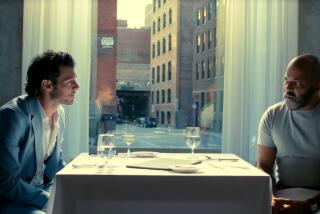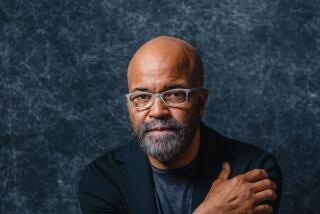âUlyssesâ--Bringing the Impossible to Life
As any English Lit major knows, James Joyceâs âUlyssesâ stands as something of a black hole in the universe of great books--nobody goes lightly into its dense genius. Some explorers, usually Joyce scholars, have been lost in the novel for years.
What an amazement, then, when word came out in the mid-â60s that plans were under way to turn this vast work into a film. That took guts . . . or stupidity. How could Joyceâs inventive, difficult-to-decipher stylings and a stream-of-consciousness narrative that mingles inward and outward realities find a life in moving pictures?
In 1967, when Joseph Strickâs adaptation was finally released, the answer came back: A nice try, but it canât be done.
âUlyssesâ the movie is a game, artistic effort, but only an approximation of Joyceâs revolutionary approach to writing and his storyâs layers of awareness and atmosphere. Itâs a failure; still, it can be a fascinating failure.
Strick, who also adapted Joyceâs âA Portrait of the Artist as a Young Manâ in 1979, may give some insight into âUlyssesâ when he speaks Tuesday night at UC Irvine after a screening of the film. The movie and Strickâs scheduled appearance are part of the six-day âCalifornia Joyceâ conference on the author, which starts Sunday and ends Friday, July 2.
The focus of Joyceâs book and Strickâs film is Leopold Bloom, an Irish Jew living in Dublin during modern times soured by the industrial age and religious bigotry. People stream through Bloomâs days, from his adulterous wife, Molly, to the young Stephen Dedalus (the hero of âPortraitâ), but much of his life is internalized. Introspection is the world Bloom primarily inhabits, given broad dimensions by Joyceâs prose.
Strick canât duplicate that reach, simply because movie images are so immediate that they leave little opportunity for the kind of expansiveness of reflection that Joyce trades in. But Strick does take several right steps that make for an intriguing film, if not necessarily a successful adaptation: One of the most affecting is retaining Joyceâs language in many key passages, using it as a hypnotic narrative hanging over strange and moody scenes.
Another is Strick and cinematographer Wolfgang Suschitskyâs use of the camera to provide vivid environments for Bloom and his people to pass through. Reginald Millsâ quick-cut editing joins with the visuals to give an otherworldliness to various important moments.
One of the most resonant finds Stephen (Maurice Roeves) walking along the beach, lost in reverie. The passage provides a sense of the artist as loner, both thrilled and disturbed by the isolation. Another, more comical scene, finds the sexually repressed Bloom (Miles OâShea) caught in his own erotic rumination, enduring a wild courtroom indictment for his fantasies.
Strick infuses the tableau with a Fellini-esque veneer by using crazy, dreamlike images to create symbols that say much of Bloomâs state of mind. Thereâs a circus going on in Bloomâs head; his is a psyche that canât stop tiptoeing along the high wire of illusion and reality.
Mark Chalon Smith is a free-lancer who regularly writes about film for The Times Orange County Edition. What: Joseph Strickâs âUlysses.â
When: Tuesday, June 29, at 6 p.m. (Strick is expected to speak sometime after 8 p.m.)
Where: UC Irvine Student Center, Crystal Cove Auditorium.
Whereabouts: Take the San Diego (405) Freeway to Jamboree Road and head south to Campus Drive. Turn left to Bridge Road and take Bridge into the campus.
Wherewithal: Free.
Where to call: (714) 856-7443.
More to Read
Only good movies
Get the Indie Focus newsletter, Mark Olsen's weekly guide to the world of cinema.
You may occasionally receive promotional content from the Los Angeles Times.










